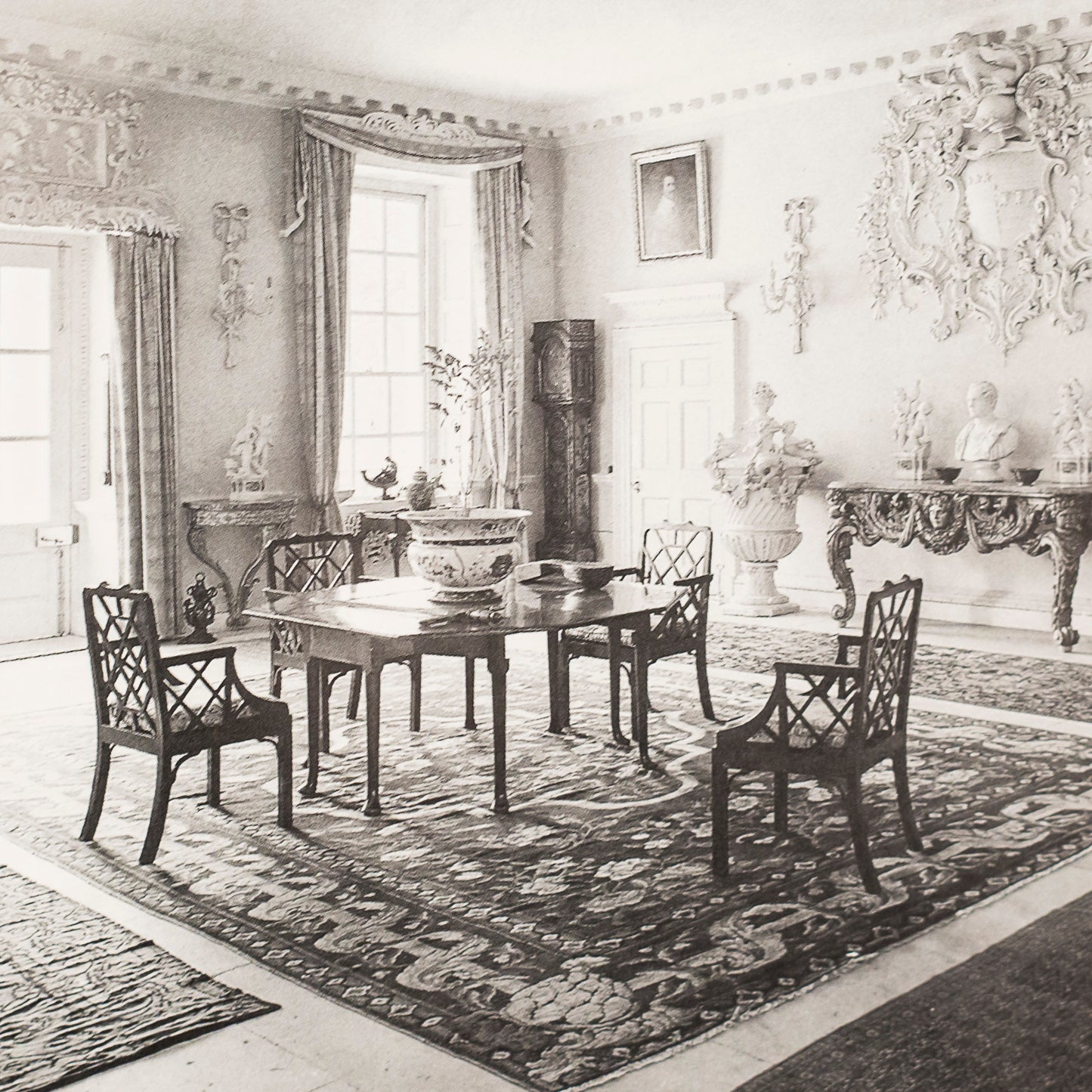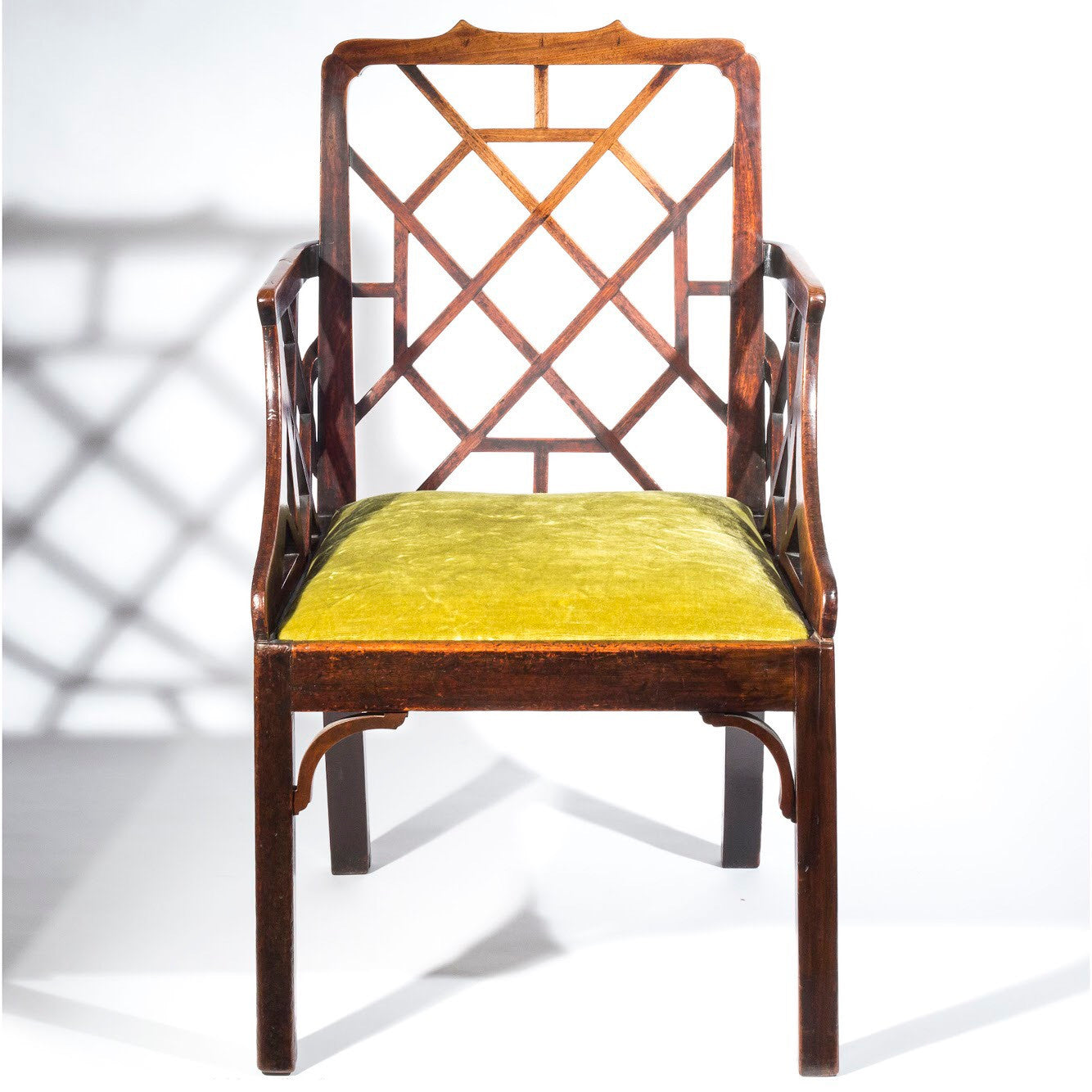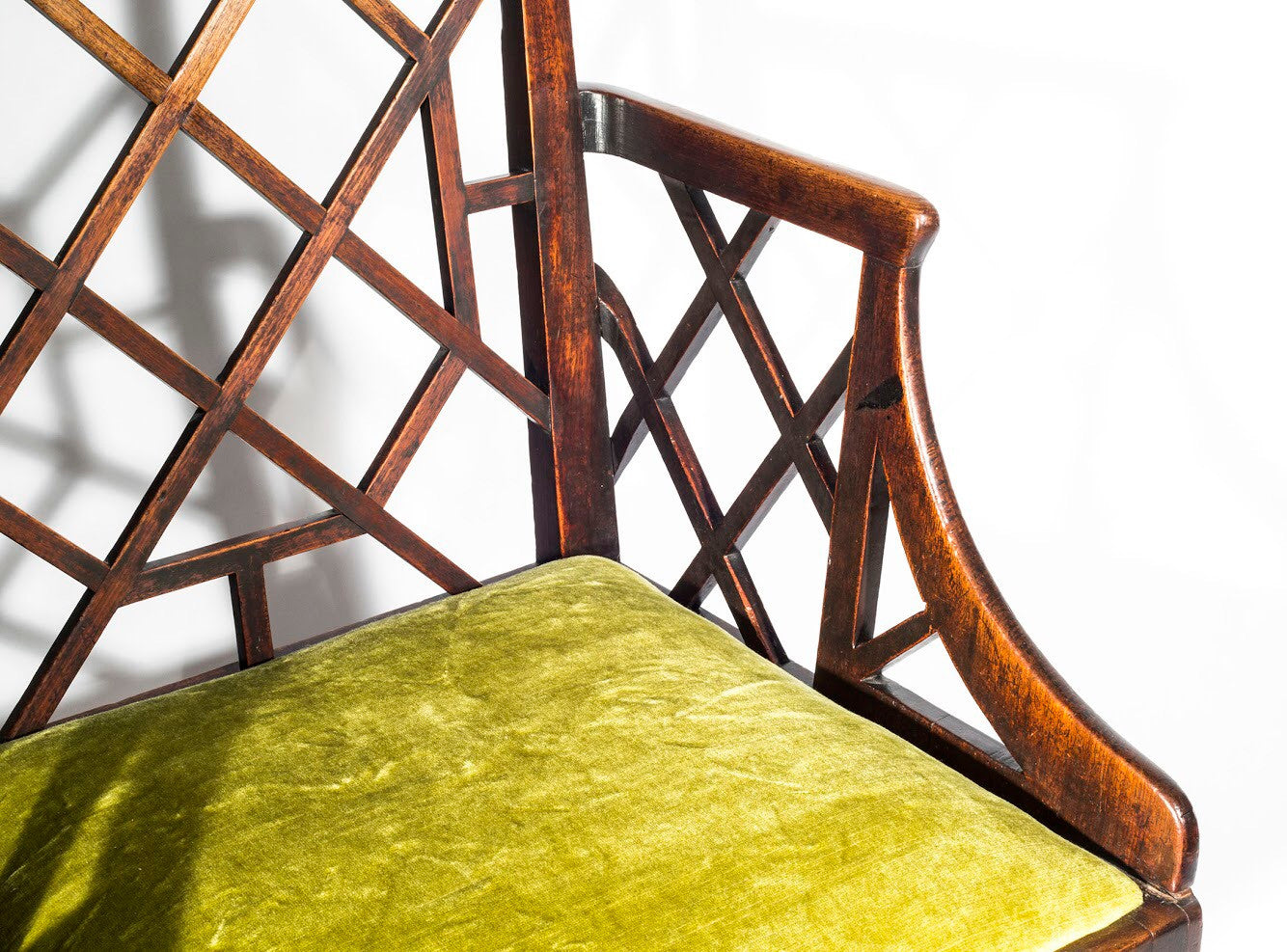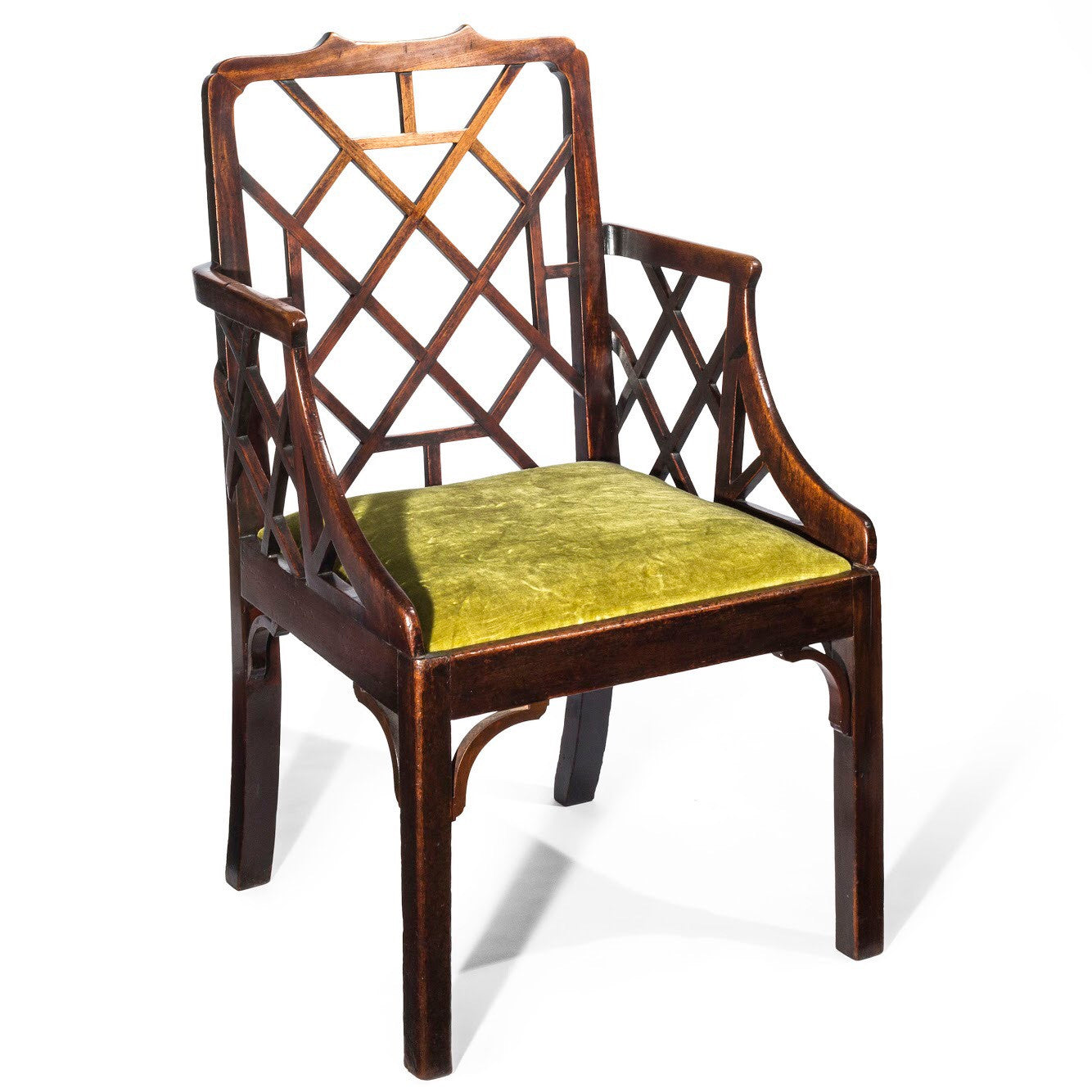Peacock's Finest
George III Chinese Chippendale "Cockpen" Armchair
George III Chinese Chippendale "Cockpen" Armchair
Couldn't load pickup availability
A mid-18th century George III Chippendale period Chinese-lattice open armchair in mahogany,
English, c. 1765
A generously proportioned, early George III period open armchair, of the Chinese Chippendale style, having the rectangular open latticework back, the pagoda-shaped crest rail with re-entrant corners, above the drop-in seat, the whole raised on square-cut legs with arched angle brackets.
Provenance: almost certainly Mr and The Hon. Mrs Basil Ionides, Buxted Park, Sussex.
A set of four identical open armchairs is photographed in situ in the Garden Hall at Buxted, illustrated in Country Life, August 4, 1950, p. 377-378, fig. 9-10.
Basil Ionides (1884–1950) was a British architect and interior decorator, the author of two best-selling books, Colour and Interior Decoration (1926) and Colour in Everyday Rooms (1934), also known for his 1929 interior design of the rebuilt Savoy Theatre and his work on interiors of Claridges hotel in London.
Outstanding colour and patination, minor restorations. Ionides married the Honourable Nellie Samuel (1883–1962), the widow of Walter Henry Levy, daughter of the 1st Viscount Bearsted and the Shell Oil heiress, in 1930. The couple were introduced by the furniture historian Margaret Jourdain, who recommended Ionides to decorate Nellie Levy’s London townhouse at 49 Berkeley Square West. Nellie was an expert in Oriental porcelain and art collector.
Built by Thomas Medley c.1725 and passed to the 3rd Earl of Leicester in the early 19th century, Buxted Park was acquired by Nellie and Basil Ionides in 1930. The couple used the house to showcase their now celebrated collection which comprised 18th century and Regency furniture, paintings, oriental and Meissen porcelain, enamels and clocks. In early 1940 Buxted Park was devastated by a fire together with much of their collection. Basil Ionides oversaw the rebuilding of Buxted and the couple added more to their collection of even greater quality. Buxted was described as a ‘reincarnated phoenix’ by Christopher Hussey in 1950 when he visited the house for Country Life (Vol. CVIII).
Nellie and Basil Ionides are “undoubtedly considered to be among the most prominent and significant 20th century British collectors of the decorative arts”.
This chair is a notable example of a highly fashionable pattern in the Georgian 'Chinese' taste. The fretted-trellis back derives from the patterns published in W. Halfpenny's ‘Twenty New Designs of Chinese Lattice’ (1750). The octagonal form of the central tablet is featured on a Chinese chair pattern in Chippendale's Director, 1754, pl. XXVII. It is considered that one of the earliest examples of this distinctive 'Chinese' design was a set of chairs in Cockpen Church, Midlothian, Scotland, made circa 1755.
For related examples see Christie’s, 31 October 2012, Lot 250;
P.Macquoid, A History of English Furniture, The Age of Mahogany, London, 1908, fig 682;
R.Edwards, Georgian Cabinet-Makers, London, 1955, p. 136, fig. 88.
Share
Free Shipping*
Free Shipping*
*We offer FREE mainland UK delivery for all items and FREE shipping to the mainland USA, Canada, continental EU (plus micro-states), Norway and Switzerland on all orders over £10,000.
For orders below £10,000, there are three flat rates: small items - £95, medium - £245 and large - £445. Each product is assigned to a respective category and the rate is displayed at checkout.
Any import-related duties, federal or local taxes and any other fees at the receiver’s country are buyer’s responsibility.
The offer is valid for purchases made at www.peacocksfinest.com.
Buyers from other countries, please, contact us for a shipping quote.














